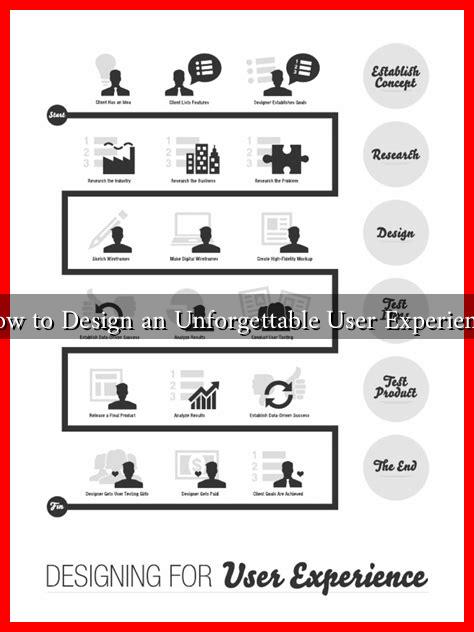-
Table of Contents
How to Design an Unforgettable User Experience
In today’s digital landscape, creating an unforgettable user experience (UX) is crucial for the success of any product or service. A well-designed UX not only enhances user satisfaction but also drives engagement, loyalty, and ultimately, revenue. This article explores the key principles and strategies for designing an exceptional user experience that resonates with users and keeps them coming back.
Understanding User Needs
The foundation of any great user experience lies in understanding the needs and preferences of your target audience. Conducting thorough user research is essential to gather insights that inform your design decisions. Here are some effective methods to understand user needs:
- User Interviews: Engage directly with users to gather qualitative data about their experiences, preferences, and pain points.
- Surveys and Questionnaires: Use online tools to collect quantitative data from a larger audience, helping you identify trends and common issues.
- Usability Testing: Observe users as they interact with your product to identify areas of confusion or frustration.
For example, Airbnb regularly conducts user interviews to understand how travelers search for accommodations, which has led to significant improvements in their platform’s usability and design.
Creating a Seamless User Journey
A seamless user journey is critical for keeping users engaged. This involves mapping out the entire experience from the first interaction to the final goal. Here are some strategies to create a smooth user journey:
- Clear Navigation: Ensure that users can easily find what they are looking for. Use intuitive menus and a logical structure.
- Consistent Design: Maintain a consistent visual language across all touchpoints, including colors, fonts, and button styles.
- Responsive Design: Optimize your product for various devices and screen sizes to ensure a seamless experience across platforms.
For instance, Spotify’s user interface is designed to provide a consistent experience whether users are on a mobile device, tablet, or desktop, making it easy to switch between devices without losing context.
Emphasizing Emotional Design
Emotional design plays a significant role in creating memorable user experiences. By appealing to users’ emotions, you can foster a deeper connection with your product. Here are some ways to incorporate emotional design:
- Storytelling: Use narratives to engage users and create a relatable context for your product.
- Visual Appeal: Invest in high-quality visuals that evoke emotions and enhance the overall aesthetic of your product.
- Personalization: Tailor the user experience based on individual preferences and behaviors to make users feel valued.
For example, Nike’s “Just Do It” campaign effectively uses storytelling to inspire and motivate users, creating a strong emotional connection with the brand.
Leveraging Feedback and Iteration
Designing an unforgettable user experience is an ongoing process. Gathering feedback and iterating on your design is essential for continuous improvement. Here are some best practices:
- Regular User Testing: Conduct usability tests at different stages of the design process to identify areas for improvement.
- Analytics Tools: Use tools like Google Analytics to track user behavior and identify patterns that may indicate issues.
- Feedback Loops: Create channels for users to provide feedback easily, such as surveys or feedback forms.
Companies like Dropbox have successfully implemented feedback loops, allowing them to refine their product based on user input, leading to a more user-centric design.
Conclusion
Designing an unforgettable user experience requires a deep understanding of user needs, a seamless user journey, emotional engagement, and a commitment to continuous improvement. By implementing these strategies, businesses can create products that not only meet user expectations but also exceed them, fostering loyalty and driving success. Remember, the key to a great user experience lies in empathy—putting yourself in the users’ shoes and designing with their needs in mind.
For further reading on user experience design, consider exploring resources from the Nielsen Norman Group, a leading authority in UX research and training: Nielsen Norman Group.

